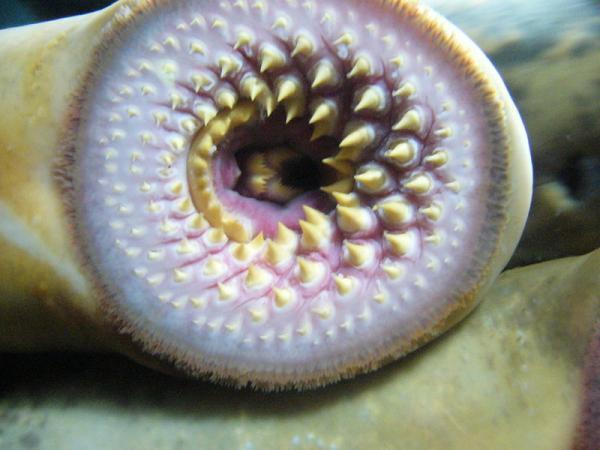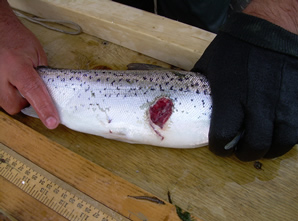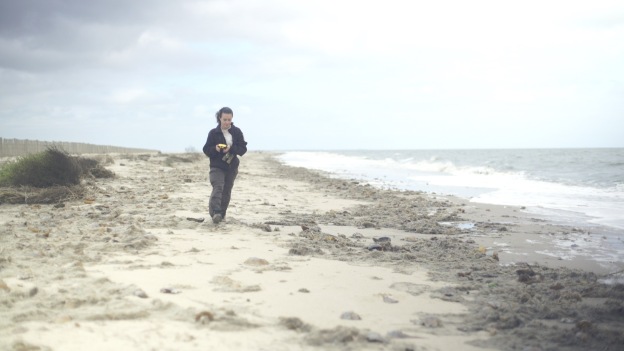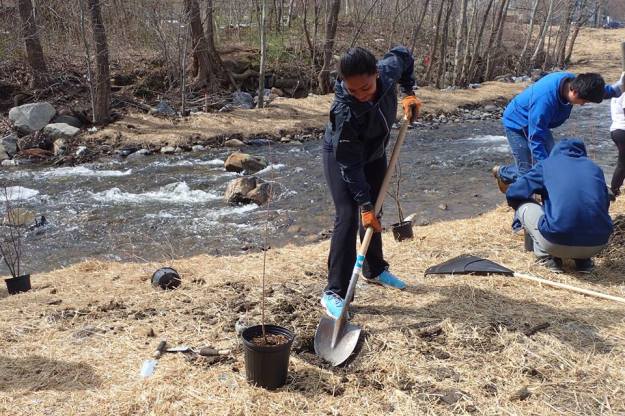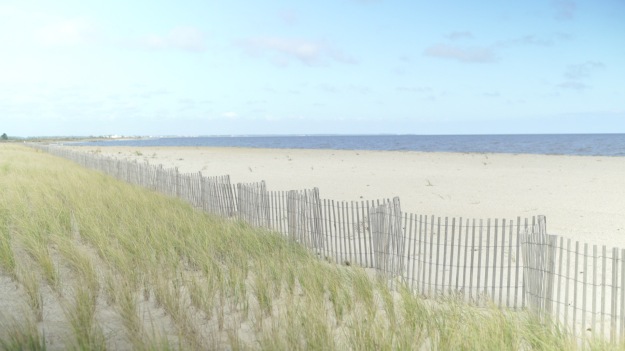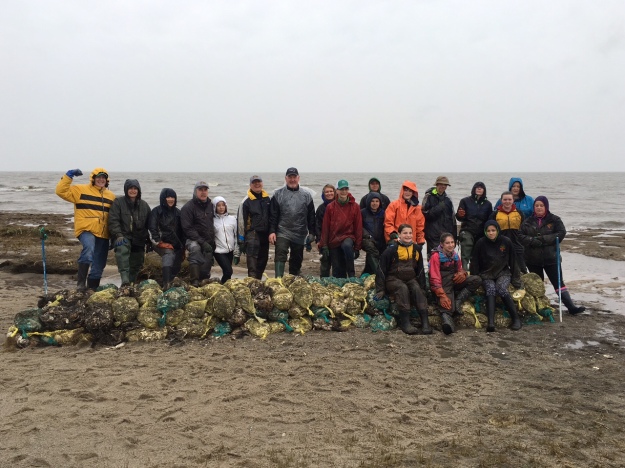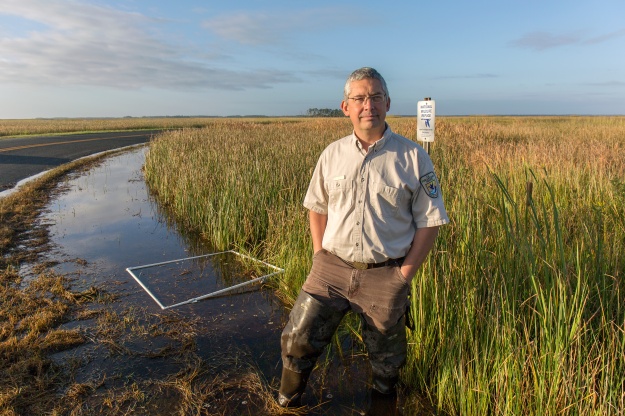






Just outside of Centreville, Maryland, you can find Julie Devers waist deep in water on the side of the road. With measuring tape in hand, she is assessing one of more than 30,000 road-stream crossings in the state. The particular culverts she is examining are known to be a severe barrier to fish passage. Safety for people and connectivity for fish and wildlife can be enhanced by simply repairing and redesigning these crossings.
Devers is a fish biologist with the Maryland Fish and Wildlife Conservation Office. By partnering with the Maryland State Highway Administration, NOAA Fisheries and Maryland Department of Natural Resources, they have been assessing road-stream crossings to develop recommendations of which culverts and crossings should be prioritized for repair. “Highways have a maintenance schedule,” says Devers, and through their recommendations, “the SHA could replace [the culverts] when they redo the highway.”
Entire roads can be wiped out if they are undersized or poorly designed. “What we saw in the Northeast during Hurricane Irene and Tropical Storm Lee is that undersized culverts really caused a lot of damage,” says Devers. Flooding from storm surges are not able to pass through these barriers and can cause thousands of dollars of damage to roads and property. As we mark the fourth anniversary of Hurricane Sandy’s devastation of the Atlantic Coast, it is important to keep in mind the impact that these climate events can have on our communities.
For species of river herrings like alewife, blueback herring and American shad the difference between a fish-friendly passageway and a severe barrier is more than a safety concern; it’s about life or death. These species are vital to the food web. Alewife have been known to be eaten by nearly anything throughout their transition in habitat; ranging from cod, halibut, fox, and eagles.
These migratory species travel from saltwater to freshwater to lay their eggs. If there are blockages along the way, they won’t be able to complete their journey. Even for nonmigratory species, such as brook trout, the inability to travel upstream could leave entire populations separated causing a genetic bottleneck. The brook trout stream near her home, one of the last in Anne Arundel County, says Devers, is considered a “relic” to the locals.
Across the whole Northeast, there are an estimated 210,000 bridges, culverts, and dams spanning 280,000 miles of river. Many of them, you are passing on your morning commute and are throughout your community. While many of these dams and bridges serve important purposes, old and inadequate designs make them a risk.
After Hurricane Sandy, funding through the Disaster Relief Appropriations Act of 2013 has supported dozens of projects to restore rivers and streams and remove barriers to connectivity. With this funding, projects throughout Maryland have been able to better protect their communities and coastline through increases resiliency. Groups like the North Atlantic Aquatic Connectivity Collaborative were able to utilize this funding to create a map and database for biologists like Devers and for the public to use. These tools provide information about the assessed barriers in a region and rates how bad they are for fish passage or safety.
Through the work of biologists like Devers, we are able to make our communities more resilient. By working to identify the features in our communities that could pose a risk to people and wildlife, she is giving stakeholders the tools to create the change needed to make us #StrongerAfterSandy.
This is the second in a five part series of photo slideshows highlighting the people who have been working to defend their coastal ecosystems against storms in the wake of Hurricane Sandy. Last week, we looked at Matt Whitbeck and Miles Simmons in Blackwater National Wildlife Refuge. You can view the continuation of this series and other news regarding our restoration and recovery projects on our website.


